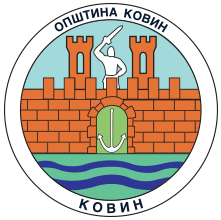Research and Education
Special Nature Reserve Kraljevac is characterised by a high level of preservation of geomorphological, peadological, hydrological and biological features of landscape, as well as a high level of ecosystem and species diversity in a relatively small area. Ecosystem and species diversity are reflected in the presence of the different biotopes and biocoenoses found in the open water surfaces of Lake Kraljevac, floating and permanently anchored peat islands, lakeshores with reedbeds, alluvial forests, wet and valley meadows, pastures with remnants of continental steppe, and cultivated fields. The Reserve is important for the conservation of the populations of the rare species of flora and fauna protected on a national and international level, including the Marsh Fern (Thelypteris palustris), the European Mudminnow (Umbra krameri), the Ferruginous Duck (Aythya nyroca), the European Bee-eater (Merops apiaster), the European Ground Squirrel (Spermophilus citellus), and the Lesser Mole Rat (Spalax leucodon).
Special Nature Reserve Kraljevac provides the perfect conditions for holding research camps and schools in nature. Moreover, further research is needed on the vegetation of floating and permanently anchored islands, alluvial forests, wet meadows, and steppe pastures, as well as research on invertebrates, amphibians, reptiles, birds, and mammals to identify the presence of rare and endangered species and establish their habitat requirements. The grounds of the Reserve includes a Research and Education Centre with 14 beds, a laboratory, an exhibition and teaching room and a summer classroom. For researchers and visitors in the Reserve there are two birdwatching towers, while a boat ride through the most precious natural area of the Reserve (Degree I protection area) is permitted only in the company of a park ranger.
The European Mudminnow found in Lake Kraljevac
In December 2014, the European Mudminnow (Umbra krameri), a relict and endemic fish species, was found in Lake Kraljevac by the Hydrobiology Research Team headed by Prof. Branko Miljanović from the Department of Biology and Ecology, Faculty of Science, University of Novi Sad. This is the third finding of the European Mudminnow in Serbia, apart from the Special Nature Reserve Zasavica and Danube-Tisa-Danube Canal. The European Mudminnow was found in a part of the lake with anchored islands representing remnants of lowland peat bogs, globally one of the rarest and most threatened habitats, and one of Serbia’s last refugia of a relict plant community of the Marsh Fern and the Grey Willow.







